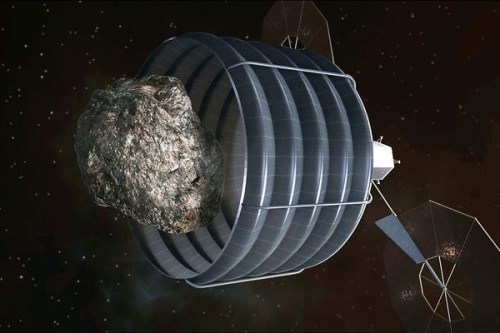Space trucking may become a reality. NASA aims to capture and haul an asteroid over the next few years with the goal of eventually sending astronauts on to its surface between 2021 and 2025. The mission was revealed on April 10, 2013, as part of NASA’s 2013 federal budget, with $104 set aside to identify a suitable asteroid candidate and start the project. The mission has two goals: It will serve as an achievable milestone in the broader scope of sending scientists to Mars by 2030, and help scientists learn how to identify asteroids moving toward Earth and how to redirect their trajectory.
“This mission represents an unprecedented technological feat that will lead to new scientific discoveries and technological capabilities and help protect our home planet,” states NASA’s chief Charles Bolden, referring to innovative technologies such as solar electric propulsion and laser communication, both necessary for deep space travel to far off destinations such as Mars.
The mission can unfold in one of two ways
In a 2012 study, the Keck Institute for Space Studies detailed one possible mission scenario for retrieving the space rock. Once the asteroid has been identified, the robotic Asteroid Capture and Return (ACR) spacecraft will be launched via the Atlas V rocket from Earth, and set to drift for 2.2 years before being propelled by the moon’s gravity. The vessel then remains adrift for an additional 1.7 years before finally reaching the target asteroid. Capturing the asteroid involves a 90-day operation in which a massive 50-foot flexible bag is deployed to secure the specimen. The ACR vessel then begins a long two-to-five-year journey back to Earth, before once again thrusting itself around the moon’s orbit into a stable space between both celestial bodies. After it is secured, the asteroid will now be able to accommodate astronauts.
Keck estimates the project costing as much as $2.6 billion, although NASA’s own proposal is cheaper because it relies on currently existing technology, and it will seek a victim much closer to Earth than proposed by Keck. Obtaining an asteroid of closer proximity could cut off as much as four years from the mission’s deadline, allowing astronauts to land as early as 2021. While the technicalities are still being determined, what’s already clear is that the ACR will be unmanned and it will use an ion engine, powered by solar electrical propulsion.

A rendering of NASA’s proposed ACR spacecraft.
Asteroid size
Professor Paul Dimotakis, one of the scientists who worked on the project, and NASA Chief Charles Bolden both agree that a reasonable size for the asteroid is between 500 to 1,000 tons, while it has significantly less mass than the 11,000 meteorite that exploded above the Russian city of Chelyabinsk, it will still shed some insight into the issue of hazardous asteroids. Asteroids are amongst the oldest objects in the solar system, and having one within visiting distance will likely lead to scientific breakthroughs and uncover more information about the early solar system.
Commercial possibilities
The mission serves as a pioneer in developing the fundamental technologies necessary for the expansion of resource acquisition into realms other than Earth. With the growth of commercial spaceflight, it is in everyone’s best interest to support this mission. NASA has alluded that several companies have already proposed mining the asteroid for rare minerals.
Story via Space.com
Advertisement
Learn more about Electronic Products Magazine





